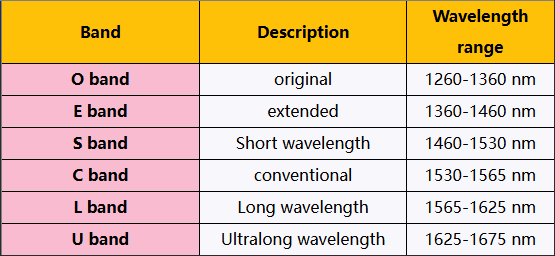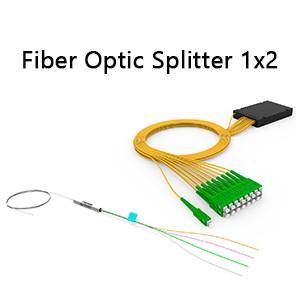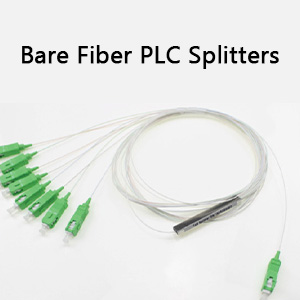Fiber optic communication uses light as an information carrier to transmit in the fiber core for communication. However, not all light is suitable for fiber optic communication. Different wavelengths of light have different transmission losses in optical fibers. In order to minimize losses and ensure transmission effects, researchers have been committed to finding the most suitable light.
In the early 1970s, fiber optic communication began to be put into practical use. At that time, the main research and development object was multimode optical fiber. The core diameter of multimode optical fiber is larger, allowing different modes of light to be transmitted on one optical fiber. The earliest light used was light with a wavelength of 850nm, and this band was also directly called the 850nm band. Later, in the late 1970s and early 1980s, single-mode optical fiber began to be used on a large scale. After testing, engineers found that light in the wavelength range of 1260nm~1360nm had the least signal distortion caused by dispersion and the lowest loss. Therefore, they adopted this wavelength range as the early optical communication band and named it O-band. O means “Original”.
After thirty or forty years, after a long period of exploration and practice, experts gradually concluded a “low-loss wavelength region”, that is, the 1260nm~1625nm region. Light in this wavelength region is most suitable for transmission in optical fibers. This region is further divided into five bands, namely O band, E band, S band, C band L band and U band.

O band: O band is the original band, with a wavelength range of 1260nm-1360nm. O band is the first wavelength band used in optical communication in history, and the signal distortion (due to dispersion) is minimal.
E band: It belongs to the extended wavelength band, with a wavelength range of 1360nm-1460nm, and is the least common band among these bands. E band is mainly used as an extension of O band, but its application is rare, mainly because many existing optical cables show high attenuation in E band, and the manufacturing process is very energy-intensive, so its use in optical communication is limited.
S band: It belongs to the shortwave band, with a wavelength range of 1460nm-1530nm. Its fiber loss is lower than that of O band. S band is used as many PON (passive optical network) systems.
C band: The wavelength range is from 1530nm to 1565nm, representing the conventional band. Optical fiber exhibits the lowest loss in the C band and has a great advantage in long-distance transmission systems. It is usually used in many metropolitan, long-distance, ultra-long-distance and submarine optical transmission systems combined with WDM and EDFA technology. With the advent of DWDM (dense wavelength division multiplexing), which allows multiple signals to share a single optical fiber, the use of the C band has been expanded.
L band: long wavelength band, with a wavelength range of 1565nm-1625nm, it is the second lowest loss wavelength band and is often used when the C band is not enough to meet bandwidth requirements. With the widespread use of EDFA, the DWDM system has expanded upward to the L band, which was initially used to expand the capacity of terrestrial DWDM optical networks. Now, it has been introduced to submarine cable operators to expand the total capacity of submarine cables. Because the transmission attenuation loss of the two transmission windows, the C band and the L band, is the smallest, the signal light in the DWDM system is usually selected in the C band and the L band.
U band: In addition to the above five bands, there is also a U band. U stands for “ultra-long-wavelength”. The wavelength range is 1625nm-1675nm. It is mainly used for network monitoring applications.










